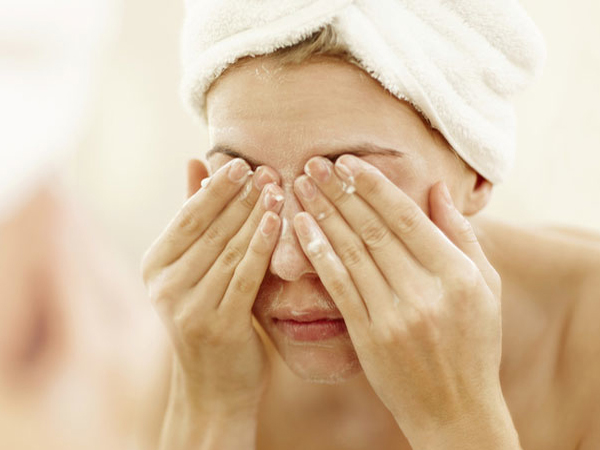Are you making this unforgivable mistake when it comes to educating your clients about exfoliation?

Most of us would like to simply blame the inevitable natural effects of the ageing process on the appearance of wrinkles and fine lines, but few people realise a lack of proper exfoliation could also be a cause.
Exfoliation is one of the most important treatments you can give your clients’ skin. As we age, the cell regeneration process slows down, causing dead cells to build up, causing the dry, dull and rough surface therapists often see during facial treatments. Clients pestered by chronically clogged pores, wrinkles and blemishes are typically clients that don’t use a proper home exfoliation routine, and not educating them about this process could undo all your treatment results.
Here’s what you should be telling your clients about at-home exfoliation…
The exfoliation basics
It’s important for clients to understand that when we exfoliate our skin, we are essentially removing the dead cells, making way for new, healthier ones to come to the surface, not only leaving a fresh, smooth and younger looking complexion, but also allowing for other products to penetrate and treat more effectively.
There are two types of exfoliants – physical and chemical. Both are instrumental in the fight against many skin conditions including ageing and acne, and it’s important for you and your clients to know the difference and which one is most beneficial for their skin type to avoid potentially injuring their skin.
Physical exfoliants
Physical exfoliants, also known as scrubs or manual exfoliants, remove the dead skin cells through friction. Scrubs contain small granules that slough off the dead cells on the surface as you manually rub it into your skin. Physical exfoliants are ideal for full body use, especially for clients with dry and flaky skin.
Scrubs are also beneficial for those with excessively oily skin. The tiny granules will clean out pores and remove dirt, makeup and other debris, preventing them from clogging the pores further.
Physical exfoliants can be those such a body polish that exfoliates and hydrates the skin and is ideal to use prior to the application of a self-tanner, or a facial scrub which uses micro exfoliating beads to manually clean out pores. Clients who use this type of exfoliant should incorporate it into their skincare regime once or twice every week, reserving chemical exfoliation for more intermittent use.
Chemical exfoliants
Chemical exfoliants remove dead skin cells by dissolving the glue-like substance that binds them together. Most chemical exfoliant products use salicylic acid, alpha hydroxyl acid (AHA), beta hydroxyl acids (BHA) or retinol. Unlike physical exfoliants, chemical exfoliants are simply applied to the skin and then rinsed off—no scrubbing is required. This makes chemical exfoliants especially beneficial for dry, sensitive and ageing skin.
A chemical exfoliant can come in the form of an everyday cleanser, or for a deeper exfoliation, use a masque or peel. Clients with sensitive skin should look for peels that contain natural plant derived enzymes.
When it comes to exfoliation, the goal should be to use a product that allows you to exfoliate as much as possible with minimal irritation to achieve the smooth, healthy and radiant skin every client desires.

